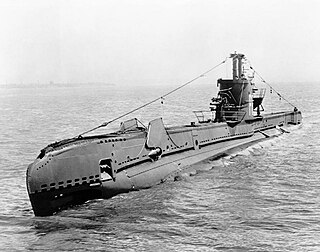Two submarines of the British Royal Navy have been named HMS Tireless:
- HMS Tireless (P327) was a Taciturn- or T-class submarine that served during the Cold War
- HMS Tireless (S88) is a Trafalgar-class submarine, decommissioned on 19 June 2014
Two submarines of the British Royal Navy have been named HMS Tireless:
Several ships and one submarine of the Royal Navy have borne the name HMS Dreadnought in the expectation that they would "dread nought", i.e. "fear nothing". The 1906 ship was one of the Royal Navy's most famous vessels; battleships built after her were referred to as 'dreadnoughts', and earlier battleships became known as pre-dreadnoughts.

The Trafalgar class is a class of nuclear-powered fleet submarines (SSNs) in service with the Royal Navy, and the successor to the Swiftsure class. Like the majority of Royal Navy nuclear submarines, all seven boats were constructed at Barrow-in-Furness shipyard, Cumbria. With two boats in commission and five retired from the seven originally in service, the class makes up part of the Royal Navy's seven boat-strong nuclear-powered ‘hunter-killer’ submarine force. The Trafalgar class is being gradually replaced by the larger and more capable Astute class, of which four are currently commissioned.
Two submarines of the Royal Navy have been named HMS Astute for the characteristic of shrewdness and discernment.
Two Royal Navy submarines have been named HMS Upholder.
Five ships of the Royal Navy have been named HMS Victorious.
Five ships of the Royal Navy have been named HMS Agamemnon, after the legendary Greek king Agamemnon.

HMS Tireless was the third Trafalgar-class nuclear submarine of the Royal Navy. Tireless is the second submarine of the Royal Navy to bear this name. Launched in March 1984, Tireless was sponsored by Sue Squires, wife of Admiral 'Tubby' Squires, and commissioned in October 1985.
Four ships of the Royal Navy have been named HMS Splendid.
Seven vessels of the British Royal Navy have been named HMS Valiant.
Three submarines of the British Royal Navy have been named HMS Talent:

HMS Tireless, a Taciturn- or T-class submarine, was the first ship of the Royal Navy to bear that name. She was authorized under the 1941 War Emergency Program and her keel was laid down on 30 October 1941 at Portsmouth Dockyard. She was launched on 19 March 1943 and was completed on 18 April 1945.

The S-class submarines of the Royal Navy were originally designed and built during the modernisation of the submarine force in the early 1930s to meet the need for smaller boats to patrol the restricted waters of the North Sea and the Mediterranean Sea, replacing the British H-class submarines. As part of the major naval construction for the Royal Navy during the Second World War, the S class became the single largest group of submarines ever built for the Royal Navy. A total of 62 were constructed over a period of 15 years, with fifty of the "improved" S class being launched between 1940 and 1945.
Seven ships of the Royal Navy have been named HMS Orpheus. Orpheus was the magical father of songs in Greek mythology.
Eight ships of the Royal Navy have borne the name HMS Bonaventure, and another was planned:
Nine ships of the Royal Navy have borne the name HMS Undaunted:
Two submarines of the Royal Navy have borne the name HMS Vox, after the Latin for Voice:
Three ships of the Royal Navy have borne the name HMS Narwhal, after the marine mammal, the narwhal:
Five ships and a shore establishment of the Royal Navy have borne the name HMS Osprey, after the bird of prey the Osprey:
Three ships of the Royal Navy have borne the name HMS Trenchant: